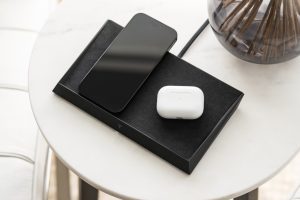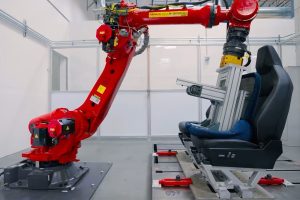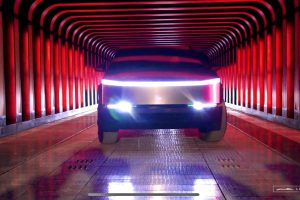Key Points
- 🚗 Cybertruck Crash Testing: Tesla performed in-house crash testing for the Cybertruck, ensuring compliance with Federal Motor Vehicle Safety Standards and allowing customer deliveries.
- 📊 No Official NHTSA Ratings: The National Highway Transportation Safety Administration (NHTSA) has not conducted official safety testing for the Cybertruck. Preliminary safety ratings on the NHTSA database lack specific crash ratings.
- 🌟 Safety Features Endorsed: While lacking official crash ratings, the NHTSA database includes Cybertruck’s safety features like Front Collision Warning and Lane Departure Warning, meeting performance criteria.
- ❌ Not on 2024 Testing List: The Cybertruck is absent from the NHTSA’s 2024 list for vehicles undergoing the agency’s five-star safety ratings tests.
- 🚦 IIHS Testing Plans: The Insurance Institute of Highway Safety (IIHS) has no immediate plans to test the Cybertruck. Automakers often perform their own crash tests, ensuring compliance with federal regulations.
- 🌐 Consumer Interest Matters: The IIHS might consider testing the Cybertruck in the future based on consumer interest. The decision will be influenced by the vehicle’s popularity.
- 💡 Nomination Possibility: Tesla could nominate the Cybertruck for IIHS testing, reimbursing testing costs and potentially expediting the process. This depends on vehicle availability and Tesla’s decision.
- 🔄 IIHS Verification Test Program: The IIHS has a verification test program, allowing automakers to submit in-house data. However, the Cybertruck isn’t currently eligible due to being a new model.
- ❓ Eligibility for Other Tests: While not eligible for the driver-side small overlap test, there is a possibility the Cybertruck could be eligible for verification in other IIHS tests, subject to the crashworthiness team’s discretion.
In the dynamic world of electric vehicles, the Tesla Cybertruck stands out not only for its futuristic design but also for the unique situation surrounding its crash safety testing. Let’s delve into the details of how Tesla has approached safety testing, the absence of official ratings, and what it means for potential buyers.
Crash Testing: Behind the Scenes
Tesla’s In-House Safety Assurance Tesla took a distinctive route by conducting in-house crash testing for the Cybertruck. The company, following Federal Motor Vehicle Safety Standards (FMVSS), ensured that the vehicle meets the necessary safety requirements, allowing for customer deliveries. This internal approach contrasts with some vehicles directly crash-tested by the National Highway Transportation Safety Administration (NHTSA).
National Highway Transportation Safety Administration (NHTSA)
Lack of Official NHTSA Ratings Surprisingly, the Cybertruck lacks official safety ratings from the NHTSA. Although Tesla’s preliminary safety ratings have been added to the NHTSA database, they don’t include specific crash ratings. Instead, the focus is on safety features such as Front Collision Warning and Lane Departure Warning, both meeting performance criteria. The absence of crash ratings raises questions about the Cybertruck’s overall safety standing compared to vehicles with official NHTSA ratings.
Not on the 2024 Testing List Adding to the intrigue, the Cybertruck is notably absent from the NHTSA’s 2024 list of vehicles set for five-star safety ratings tests. While the absence doesn’t imply safety concerns, it leaves potential buyers in anticipation of the official verdict on the Cybertruck’s crashworthiness.
Insurance Institute of Highway Safety (IIHS)
IIHS Testing Plans – A Wait-and-See Approach The IIHS, responsible for conducting independent crash tests, currently has no immediate plans to test the Cybertruck. Unlike the NHTSA, the IIHS relies on automakers’ crash tests for compliance assurance.The decision not to test the Cybertruck at the moment stems from the vehicle being a relatively new model.
Consumer Interest as a Deciding Factor Interestingly, the IIHS has left the door open for future testing. The organization indicates that consumer interest plays a pivotal role in deciding whether a vehicle merits independent testing. This reflects a consumer-driven approach, indicating that the IIHS considers public demand when selecting vehicles for evaluation.
Nomination Possibility and Verification Test Program Tesla holds the potential to expedite the IIHS testing process by nominating the Cybertruck for evaluation. In such cases, the automaker can reimburse testing costs, demonstrating confidence in the vehicle’s safety. Additionally, the IIHS has a verification test program, allowing automakers to submit in-house data for evaluation. However, the Cybertruck’s eligibility for this program remains uncertain due to its status as a new model.
Conclusion: Navigating Uncertainties
As potential Cybertruck buyers navigate the uncertainties surrounding official safety ratings, the unique testing situation underscores the evolving landscape of electric vehicle safety standards. Tesla’s innovative in-house testing and the IIHS’s consumer-centric approach contribute to a narrative that extends beyond conventional safety testing norms.





